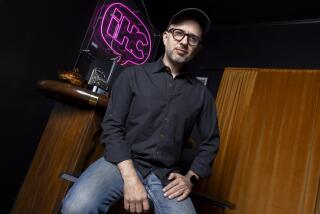It’s Not the Rave It Once Was
- Share via
It’s been a long, glum summer for the Southern California rave scene, and the party won’t get any happier this week as a grim anniversary arrives.
Three years ago Wednesday, five young people died on a Sunday morning when their car plunged over a steep embankment on Angeles Crest Highway about 35 miles northeast of La Canada Flintridge. They had just left a rave at a ski resort, and their deaths became a high-profile hammer used against the all-night dance parties by the scene’s many foes and critics. Despite that, the region’s rave scene managed to grow. One year to the week after the fatal crash, the seventh annual Nocturnal Wonderland rave in Indio drew about 40,000 fans, making it perhaps the largest rave in U.S. history.
That seems like a long time ago. This year, the ninth annual Nocturnal Wonderland was canceled altogether. Nocturnal promoter Pasquale Rotella says it was simply too difficult to find a community that would accept the event.
“It’s just been hard,” he said, adding that disappointment fatigue has turned off some ravers.
“A lot of the events last summer got shut down, too,” Rotella said. “People buy pre-sale tickets and show up and the event is shut down--and then that happens two or three more times, well, they stop coming out.”
There are other factors dimming the glow of raves. “Events are struggling,” said Raymond Roker, editor in chief of Urb, a magazine that has long tracked the rave scene. “There are promoters struggling to get the amount of people that they got before, and some promoters who have been doing this a long time are struggling to stay afloat.”
Roker and others say the reasons include the pinch of the economic times, escalating fees for star deejays and the chilling effect of law enforcement efforts against the rave world, including a federal test case in New Orleans that has sought to use so-called “crack house” laws to go after rave promoters as participants in drug enterprise. A U.S. Senate bill that would sharpen those federal laws for easier use against raves is now in the pipeline.
The raves have also seen a chunk of their fans dance away to the clubs and festivals that offer the vibe and sound of raves without the long drive to a remote sites and arduous all-night schedule. “Raves are not going away, but there does to seem to be something missing lately,” Roker said. “The machine is still churning, but the results are not as spectacular as they were in recent years.”


